It’s LGBTQ History Month, and not a moment too soon! It’s absolutely necessary at this moment in time to remember some of the icons of our collective queer past who have overcome all kinds of adversity to change the world and our individual lives. So we’re dedicating this first roundtable of October to our favorite LGBTQ historical figures.
Billie Jean King

Heather Hogan: I love LGBTQ+ history because LGBTQ+ people have done so many of the best things in this world! It’s hard to choose a favorite; I want to list 100 queer women! I’m going to go with my love, my love, my love Billie Jean King, though. She is, of course, most known for winning the Battle of the Sexes against Bobby Riggs in 1973, on the heels of founding the WTA, which she established, played in, and maintained, all because she refused to accept that women tennis players deserved less money than their male counterparts. Both founding that organization and agreeing to play Riggs were huge risks to BJK herself, and they were huge risks to the feminist movement at large, which she knew. She shouldered that burden with a smile!
It took BJK a long time to come out. Part of it was that she knew her sexuality would hurt the women’s movement and women’s sports; part of it was that she would lose the ability to support herself financially (which she was proven correct about: when she was outed, she lost all her endorsements in a single day); part of it was that she’d grown up with a mother who was absolutely opposed to gayness in every way. When she finally did come out, though, she became a champion for LGBTQ equality and has continued to champion women’s tennis and call out sexism in every nook and cranny of the game. Most recently in this summer’s U.S. Open when Serena faced such sexism and racism from the chair ump. BJK is one of the best tennis players in history, and also she’s just a rad-as-hell badass and very good person. And she has never apologized once for her greatness.
James Baldwin
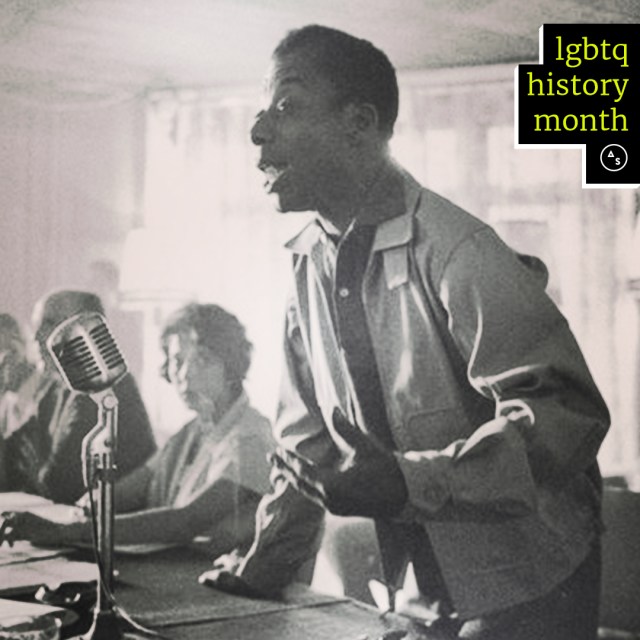
Rachel Kincaid: My favorite LGBTQ historical figure is also my favorite writer is also my idol — longtime readers will probably be sick of me talking about James Baldwin by now but that’s too bad, here we are! Baldwin was born in 1924 in Harlem, where he was raised by his mother and preacher stepfather, and later became a junior minister/child preacher in the Pentecostal church. He left the US at the tender age of 24 to make a life for himself in Paris, finding the weight of American racism was unbearable. His writing career began to take off in Paris, and his second novel, Giovanni’s Room, was his first to deal explicitly with a same-sex relationship. His publisher at the time at Knopf told him:
…I was “a Negro writer” and that I reached “a certain audience.” “So,” they told me, “you cannot afford to alienate that audience. This new book will ruin your career because you’re not writing about the same things and in the same manner as you were before and we won’t publish this book as a favor to you… So I told them, “Fuck you.”
(This was in 1956!) Later, Baldwin left Paris, feeling an obligation to be more involved in the US civil rights movement (although it should be noted he didn’t sign on to the term ‘civil rights movement,’ calling it instead in 1979 “the latest slave rebellion.”). He wrote journalism and essays, including book-length ones like the incomparable The Fire Next Time, which reads just as urgently today. He also made public appearances for speeches, interviews and debates, demonstrating an incandescent speaking presence and rhetorical style that put all his experience from the pulpit to a different purpose. This brief debate on the Dick Cavett show about, essentially, “why it always has to be a race thing” is a good example.
Baldwin did all this while being out and unapologetically not-straight (although he refused to identify with a specific label right up through the end of his life, stating in his last interview, “The word gay has always rubbed me the wrong way. I never understood exactly what is meant by it. I don’t want to sound distant or patronizing because I don’t really feel that. I simply feel it’s a world that has little to do with me, with where I did my growing up. I was never at home in it.”) His openness about his sexuality was often a source of frustration for his allies and enemies alike, but choosing to embody a seeming contradiction was everything that made Baldwin so remarkable. He could be scathing in his cultural critiques and observations, but generous enough to give them; he was clear-eyed and unsentimental about the incredible harm he saw enacted but refused to become cynical in the face of it; he largely denounced the church he had grown up in but in many ways manifested its most admirable principles with his life and work. I love him and his work very much, and think there is an endless amount to learn from him!
Adah Isaacs Menken
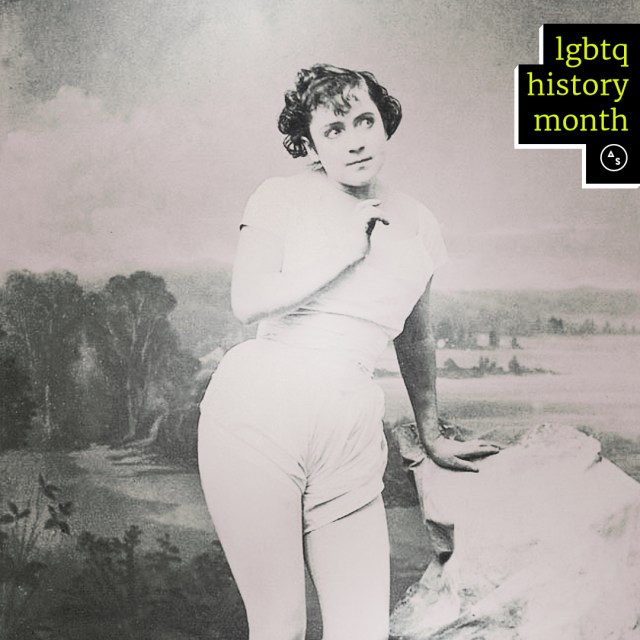
Creatrix Tiara: Adah Isaacs Menken was basically Lady Gaga before Lady Gaga’s grandmother was even born. She rose to fame in the mid 1800s via her role in the play Mazeppa, where she put on a flesh bodysuit and rose a horse on stage – both very, very unusual for women at the time. (Burlesque owes a lot to this woman.) She would craft and sell photo portraits of herself to make sure people remembered her the way she wanted to be remembered. She wrote tons of poetry and essays and also had male and female lovers. My favourite part of her story is that she’d never have a consistent answer to questions about her heritage; as someone who hates “where are you from?” with a passion because nobody believes me, I’m often tempted to take on her strategy.
Eleanor Roosevelt

Carrie Wade: Eleanor Roosevelt! Her not-straightness is pretty well established at this point, but for those of you just joining the party, she had a — shall we say — close relationship with Associated Press reporter Lorena Hickok, who lived in the White House at Eleanor’s invitation (!) from 1941 until 1945. Kayla brilliantly recapped their letters to each other on this very website if you’re curious.
Of course, Eleanor stands out even among the most badass American First Ladies. Lots of contemporaries took issue with her being too outspoken, publicly disagreeing with some of her husband’s policies, and taking a progressive-for-the-time stance on racial justice. She didn’t let the bastards get her down and became the first First Lady to hold individual press conferences, write regular newspaper and magazine columns, host her own weekly radio show, and speak at a national political party convention. She was also the only woman appointed to the first American delegation to the UN.
Fun fact: the FDR Memorial in DC includes statues of both Franklin and Eleanor, but never shows them together. (Eleanor’s sits in front of the UN seal and refers to her specifically as “Eleanor Roosevelt: First United States Delegate to the United Nations.”)
Whitney Houston
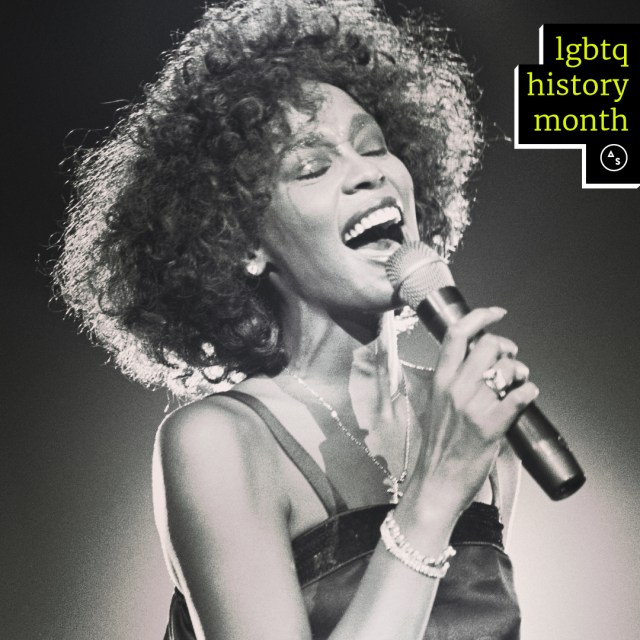
Erin Sullivan: I mean, I’m not sure you would classify her as a historical figure per se, as she was just one of the biggest stars of all time, but Whitney Houston is my bi queen. She deserved so much more than what she ultimately got, in so many arenas of her life, and we really didn’t deserve her! A lot of people either a) do not subscribe to the family/assistant confirmed fact about Whitney that she was romantically involved with her friend/assistant Robyn Crawford or b) haven’t even heard about this family/assistant confirmed fact about Whitney that she was romantically involved with her friend/assistant Robyn Crawford, but that doesn’t mean it’s not true! She wasn’t out, maybe not even to herself, so there wasn’t necessarily an activist or political bent to her, but she’s a good reminder that queer people have always been out here!
Unrelated to a LGBT history, one of my favorite things that I learned in the most recent Whitney documentary was that her performance of the “Star Spangled Banner” in 1991 where everyone lost their minds was that someone tried to send her the orchestra music two weeks in advance so she could get a feel for it, and the day before she was set to sing listened to it for first time for like 30 seconds, didn’t practice, and the next day just walked out, sang it, one time, bloop, record it. Bi-excellence.
Langston Hughes

Alexis Smithers: I’m going down memory lane with these apparently but let me tell you about my home boy, Langston Hughes. We all know him, famous gay black poet one of the best writers from the Harlem Renaissance one of the best writers period BUT YOU DON’T KNOW that I’ve been obsessed with him since I was in third grade and my mom got me this picture book called Visiting Langston about this little black girl that visited Langston Hughes’ house and wanted to be a writer and my mom wrote me a note in the cover of the book telling me how much she loved me and the writing I did. I still, to this day, will flat out cry at the memory of it.
We had to dress up/act as poets for my senior class and everyone in the English department literally begged me not to do Langston Hughes (but I waited ’til the last minute so I worked with my boy anyways and I got to argue with Sylvia Plath; it was a good day).
My mom bought me all kinds of copies of his work but the one that sealed the deal for me was his entire work of collected poems. I’m looking at it right now and it weighs so much; I carried it with me when I got Saturday detention for skipping class ’cause I thought it would help me not cry for getting in trouble. I scribbled in the margins of my notebook and memorized “I, Too” whenever white people were too much which is often and I reread and recited the small poem “Suicide Note” over and over my junior year and performed my first feature across a painting of Langston at Busboys and Poets and wrote my first poems after Langston. I know there’s so much he’s done. I get overwhelmed even thinking about trying to tell you in this space. But sometimes, hearing how special other people have been to people I care about makes me want to look them up and that’s what I did here and can you tell I never did very well on school assignments.
Amelia Earhart
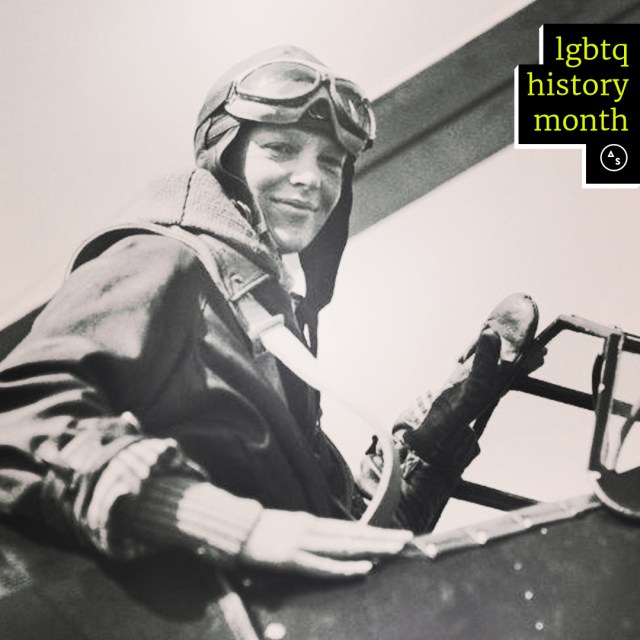
Alaina Monts: My favorite LGBTQ+ historical figure is Amelia Earhart. She was “close friends” with Eleanor Roosevelt, and flew for long distances with a woman-led flight crew. She married a man for convenience and had a strong jawline. She looked great in pants. She has a “steal your girl” smile. I bet her hands were soft. I watched this Netflix documentary about her last year and it definitely convinced me that her plane did not crash but landed safely on an island where she and her lover lived happily ever after.
Sally Ride
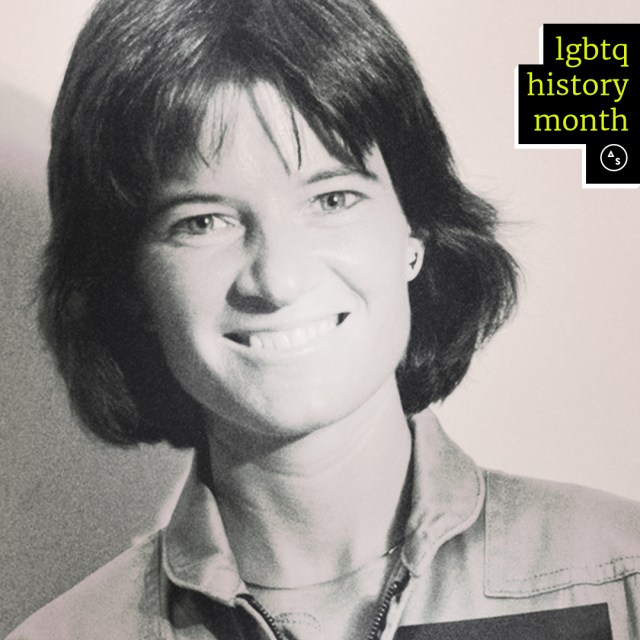
Alyssa Andrews: The idea of a “historical” figure feels like my pick should be plucked from the deep vault, but after (admittedly way too much) mulling, I keep circling back to Sally Ride: conqueror of earth, space, and a queer romantic partnership that stood the test of time. Sally changed the course of history on June 18, 1983 when she flew on the space shuttle Challenger becoming not only the first American woman to go to space, but the first acknowledged* gay astronaut (though, of course, we found that out later). If that’s not the epitome of badass, i don’t really know what is.
P.S. She’s also got a sister named Bear Ride, who’s a gay Presbyterian Minister.
P.S.S. You read that correctly. Her name is BEAR. FUCKING. RIDE.
NASA focused sources still often completely ignore mentioning anything about her queerness in any and all biographies, but she’s really google-able, and this news article is pretty sweet.
Barbara Chirlane Jordan
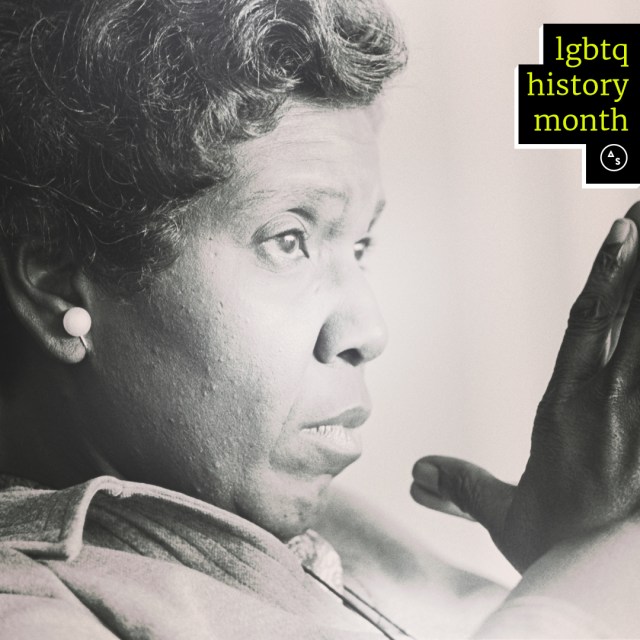
Natalie Duggins: I’ve been thinking a lot about my favorite LGBTQ history figure, Barbara Chirlane Jordan, recently. She was a the lawyer, educator, politician and activist, who found so many ways to etch her name into the history books. She was the third black woman to earn a license to practice law in Texas (1959). She was the first black woman elected to the Texas legislature (1966). She was the first black woman elected to represent the South in Congress (1972) and the first black woman to serve as Keynote Speaker of the Democratic National Convention (1976). But I’ve been thinking of Jordan’s role as a member of the House Judiciary committee (1974), the starting place for impeachment proceedings of federal officers.
Jordan sat on that committee, as an inquisitor, prepared to investigate whether the transgressions of a president had risen to the level of “high crimes and misdemeanors.” She proclaimed, “my faith in the Constitution is whole; it is complete; it is total. And I am not going to sit here and be an idle spectator to the diminution, the subversion, the destruction, of the Constitution,” and then went on to lay out the case for Richard Nixon’s impeachment, piece by piece. She’d strengthen her argument using the words and documents of our Nation’s founders — the same documents that never intended for Barbara Chirlane Jordan to have a seat at that table — to bring down the President.
Jeanne Córdova
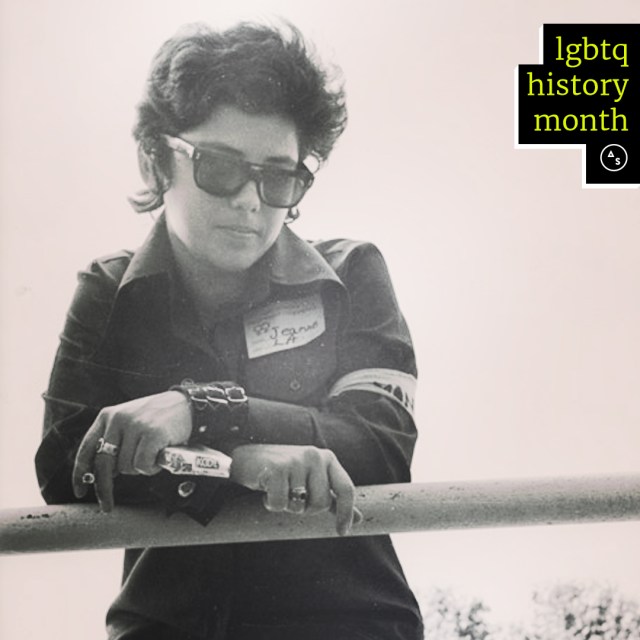
Riese Bernard: Listen, founding The Lesbian Tide and generally being a kickass butch lesbian writer and activist is enough but also, Jeanne Cordova left Autostraddle a gift in her estate, which Sally Ride unfortunately did not do, although I do love Sally Ride with all my heart. You can read more about my love for Jeanne Cordova in Thank You Jeanne Córdova, Love Autostraddle Dot Com and Jeanne Córdova Dies At 67: Goodbye to the Activist and Writer Who Lead The Way We’re Going.


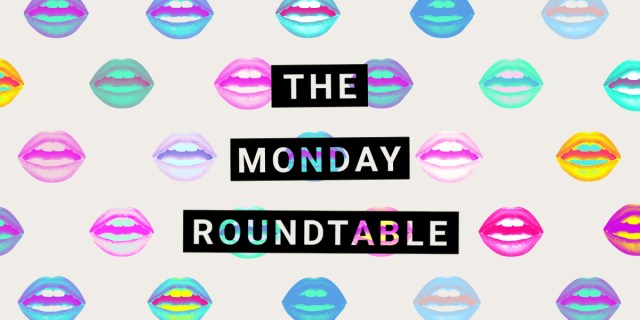

Love all of this!!!
This is a very well-known quote by Eleanor Roosevelt ~ but her dry humor still makes me smile every time I think of it:
“I once had a rose named after me and I was very flattered. But I was not pleased to read the description in the catalogue: no good in a bed, but fine up against a wall.”
The link to Kayla’s letters recap is a little bit broken!
I love Jeanne Córdova! Is there a documentary out there about her? I always wonder if her book could ever translate to a film or not… I’m not sure I would really trust anyone to do it as thoughtfully or nuanced as it deserves (re: all the inter-community issues she wrote about.)
Excellent roundtable!
I just finished reading Amy Bloom’s “White Houses”, which is about Lorena Hickok (“Hick”) and Eleanor Roosevelt. It was great and I found out about it because Laneia mentioned she was reading it in Issue 46 of the Autostraddle Insider. Thanks, Laneia!
I feel rather shallow for this cause she didn’t change the world or anything but Julie d’Aubigny. Singer and master swordswoman, she was the living embodiment of a lover and fighter. A 17th century person that I think of when I listen to L7- Fast and Frightening, Peaches- Boys Wanna Be her.
She inspires me, have an appetite be voracious fuck pretending you’ve got no appetite. My mother eats like bird and thinks I should be ashamed or apologetic at eating whole pizzas by myself, fuck that working out makes me hungry and horny.
Self-denial and smallness are not virtues, not to me and hopefully never will be.
I refute your statement that someone who broke her gf out of a convent by setting it alight and distracting everyone with a dead nun did not change the world.
This truely should be the new standard by which romantic gestures are judged.
I am far too fickle to have a favourite, and usually just love whoever I am reading about at the time. Currently I am loving/reading about Naomi Jacob (or Micky to her friends/lovers) who was, variously, a teacher, actress, suffragette and munitions factory boss, before moving to Italy to write over 60 straight romance novels, despite the fact that she was a raving lesbian who always wore men’s clothing (except a skirt for church on Sundays).
What I particularly love is the fact that she was incredibly proud of her Jewish heritage at an incredibly dangerous time to be Jewish, and when every other privileged queer woman at the time seemed to think fascism was fashionable. She once physically kicked Radclyffe Hall and her whole ménage out of her house because of their anti-semitic comments. Her novels (which were generally lengthy family saga affairs) were wildly successful at the time, she was well-known in Britain and appeared frequently on Woman’s Hour, and she used her platform to write about everyday Jewish people in a way no-one else was doing. These days, all her books have been written off as soapy trash, forgotten about and are out of print.
I think she needs to make a resurgence!
Since Julie d’Aubigny was mentioned already I’d have to say Catalina de Erauso.
She was a Basque Spanish ex-nun who dressed as a man, joined the army, had a long and adventurous military career, and was known for her love affairs with women (seriously, here’s an incomplete list of people who slept with: her brothers mistress, her boss’s mistress, her new boss’s sister in law, two women at the same time, anyone she damn well pleased, etc. ).
She was extremely morally ambiguous and had no problem killing people or stealing from them. She wrote her memoir in her golden years and received special permission from the Pope to continue wearing men’s clothes. Rejected Princesses did an entry on her.
I had to say Chavela Vargas…
“Ama sin medida, sin límite, sin complejo, sin permiso, sin coraje, sin consejo, sin duda, sin precio, sin cura, sin nada. No tengas miedo de amar, verterás lágrimas con amor o sin él”
I haven’t seen anyone say Sylvia Rivera. Her “Y’all better quiet down” speech is one of the most powerful things I’ve watched and has been a major inspiration in how I view the fight for trans and queer rights.
Link:
https://www.youtube.com/watch?v=9QiigzZCEtQ
PAULI MURRAY THE END